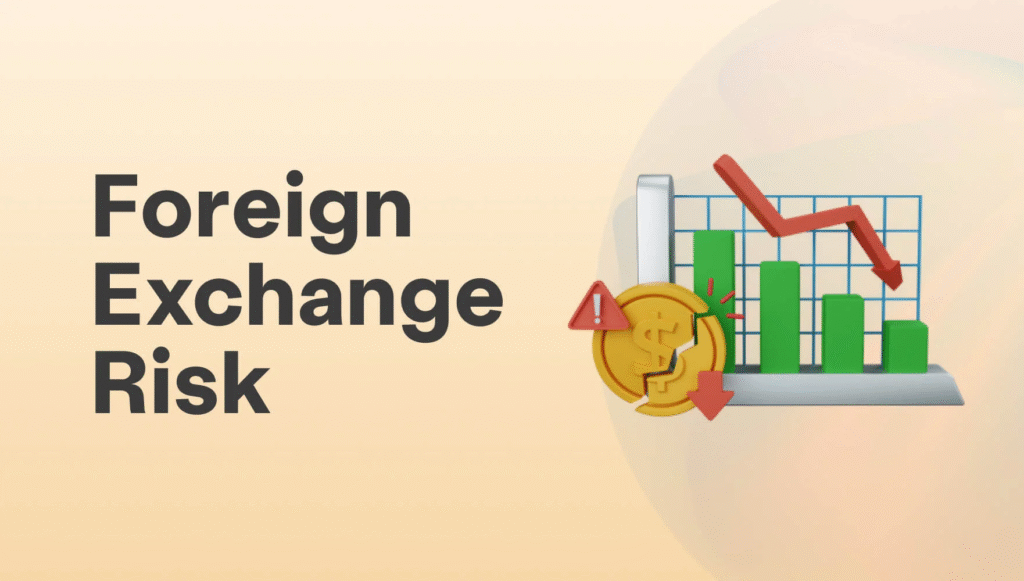In today’s interconnected global economy, businesses and individuals are no longer confined by geographic borders. Cross-border trade, investments, and financial transactions are an everyday reality. With this increasing international exposure comes the need to manage foreign exchange risks and access capital in various currencies. Enter the Forex Loan, a powerful financial tool designed to meet these specific needs.
If you’re wondering, “What is a Forex Loan and how does it work?”, this comprehensive guide will provide a deep dive into the concept, mechanics, benefits, risks, and practical applications of Forex Loans. Whether you’re a business owner exploring financing options or an individual investing internationally, understanding Forex Loans can help you make informed financial decisions.
Key Takeaways
- Forex Loans are loans denominated in a foreign currency.
- They help manage currency risk and potentially reduce borrowing costs.
- Borrowers must repay the loan in the same foreign currency.
- Common users include exporters, importers, and multinational corporations.
- Managing currency risk is critical to avoid adverse financial impacts.
- Various types of Forex Loans cater to different needs, from trade finance to capital investments.
- Proper planning, lender selection, and risk management are key to leveraging Forex Loans effectively.
Understanding Forex Loans
A Forex Loan (short for “Foreign Exchange Loan”) is a loan extended to a borrower in a currency other than their domestic currency. The borrower receives the loan amount in a foreign currency and is obligated to repay it in the same currency. Forex Loans are commonly used by:
- Importers and Exporters looking to match liabilities with revenues
- Multinational corporations funding operations in different countries
- Investors seeking capital for foreign investments
By denominating debt in the currency of their revenues or expenses, borrowers can manage currency risk more effectively and potentially reduce borrowing costs.
How Does a Forex Loan Work?
The process of obtaining and managing a Forex Loan typically involves the following steps:
Loan Agreement
The borrower approaches a bank or financial institution and agrees on the terms of the Forex Loan. The key elements include:
- Currency in which the loan will be denominated
- Loan amount
- Interest rate (usually based on the benchmark rate of the foreign currency, such as LIBOR, EURIBOR, or SOFR)
- Loan tenure
- Repayment schedule
- Collateral requirements (if any)
Disbursement
Once approved, the loan amount is disbursed in the agreed foreign currency. Borrowers can use these funds to:
- Pay for imports
- Fund overseas operations
- Invest in foreign assets
- Manage working capital needs
Currency Risk Management

Since repayments must be made in the foreign currency, borrowers often implement risk management strategies, such as:
- Natural hedging (earning revenues in the same currency)
- Forward contracts to lock in exchange rates
- Options to protect against adverse currency movements
Repayment
The borrower repays the loan as per the agreed schedule in the same foreign currency. Exchange rate movements during the loan period can impact the effective cost of the loan when converted to the borrower’s domestic currency.
Benefits of Forex Loans
Forex Loans offer several advantages to businesses and individuals engaged in international activities:
Lower Interest Rates
Interest rates in certain foreign currencies may be lower than those in the borrower’s domestic currency, leading to reduced borrowing costs.
Currency Matching
By borrowing in the currency of revenues or expenses, borrowers can match liabilities with cash flows, reducing foreign exchange risk.
Improved Cash Flow Management
Accessing capital in foreign currencies can help businesses manage working capital more efficiently, especially when dealing with suppliers or customers in different countries.
Diversification
For multinational corporations, Forex Loans provide the flexibility to diversify funding sources and manage currency exposures across markets.
Risks of Forex Loans
While Forex Loans offer notable benefits, they also come with inherent risks:
Currency Risk
If the borrower’s domestic currency depreciates significantly against the foreign currency, the cost of repayments can increase, potentially leading to financial strain.
Interest Rate Risk
Interest rates in foreign currencies may fluctuate, impacting the overall cost of borrowing.
Regulatory Risk
Changes in exchange control regulations or restrictions on foreign currency transactions can affect the ability to service the loan.
Complexity
Managing Forex Loans requires a good understanding of foreign exchange markets and risk management strategies, making them more complex than domestic loans.
Types of Forex Loans
Forex Loans come in various forms, tailored to different needs:
Term Loans
Structured with fixed tenures and repayment schedules, suitable for capital investments or large purchases.
Revolving Credit Facilities
Flexible credit lines allowing borrowers to draw and repay funds as needed, ideal for managing working capital.
Trade Finance Loans
Short-term loans linked to specific trade transactions, such as import/export financing.
External Commercial Borrowings (ECBs)
Loans raised by domestic companies from foreign lenders under regulatory frameworks (common in countries like India).
Who Should Consider Forex Loans?
Forex Loans are best suited for:
- Exporters and Importers
- Multinational corporations with operations in multiple countries
- Businesses sourcing materials globally
- Investors with foreign currency obligations
Before opting for a Forex Loan, it is crucial to assess:
- Currency exposures
- Revenue and expense profiles
- Risk appetite
- Hedging strategies
How to Apply for a Forex Loan
Assess Needs
Understand why you need a Forex Loan and how it aligns with your business or investment strategy.
Choose the Right Lender
Approach banks or financial institutions with expertise in foreign currency lending.
Negotiate Terms
Work with the lender to structure the loan, considering currency choice, interest rates, tenure, and repayment terms.
Implement Risk Management
Plan and implement hedging strategies to mitigate currency risks.
Monitor and Manage
Continuously monitor exchange rates, market conditions, and loan performance to make informed decisions.
When Should You Consider Taking a Forex Loan?

Deciding when to take a Forex Loan depends largely on your business’s exposure to foreign currencies and your strategic financial needs. Here are some common scenarios where a Forex Loan might be a smart choice:
You Have Regular Foreign Currency Revenues or Expenses
If your business generates regular revenues in a foreign currency—such as an exporter billing in USD or EUR—taking a Forex Loan in the same currency helps naturally hedge exchange rate risks. Similarly, if you have regular expenses like paying foreign suppliers, a Forex Loan aligns your cash inflows and outflows.
Interest Rates Are More Favorable in Foreign Currencies
You should consider a Forex Loan if interest rates in the target foreign currency are lower than in your domestic currency. For example, if borrowing in EUR or USD is cheaper than borrowing in your home market, this could reduce your overall cost of capital.
You Are Financing International Expansion or Overseas Operations
When expanding abroad—whether opening a new office, acquiring assets, or hiring staff—a Forex Loan provides funding in the local currency, making it easier to manage costs and avoid currency conversion fees.
You Are Involved in Cross-Border Trade
Importers and exporters with exposure to international markets often face volatile exchange rates. A Forex Loan offers an efficient way to fund purchases and sales in the relevant foreign currency, reducing the risks of sudden currency depreciation or appreciation.
You Seek to Diversify Funding Sources
If your business is looking to diversify its borrowing and funding sources, a Forex Loan can complement domestic financing options and improve overall financial flexibility.
You Need to Bridge Currency Mismatches
In situations where there is a mismatch between your operating currency and debt obligations, a Forex Loan can bridge the gap and stabilize your financial planning.
You Have Sophisticated Risk Management Capabilities
Forex Loans require an active approach to risk management. If your company has the expertise or works with advisors skilled in hedging currency risks (using forwards, options, or swaps), you may be in a good position to benefit from the advantages of Forex Loans.
How to Choose the Best Forex Loan for Your Needs?
Selecting the right Forex Loan involves more than just comparing interest rates. You must carefully assess your currency exposure, financial goals, and risk tolerance. Here’s a step-by-step guide to help you make the best choice:
Analyze Your Currency Exposure
Start by understanding your business’s exposure to foreign currencies:
- What percentage of your revenues and expenses are in foreign currencies?
- Do your cash inflows and outflows naturally match?
- Are you exposed to specific currencies (USD, EUR, JPY, etc.)?
If you have steady revenues or costs in a particular currency, a Forex Loan in that currency helps balance your cash flows and minimizes currency risk.
Identify Your Funding Purpose
Clearly define why you need the loan:
- Are you funding a one-time purchase (e.g., equipment or property)?
- Do you need ongoing working capital for imports/exports?
- Are you investing in an overseas venture or asset?
Matching the loan type (term loan, revolving credit, trade finance) to your funding purpose ensures flexibility and cost efficiency.
Compare Interest Rates and Total Cost
Look beyond headline interest rates. Consider:
- Benchmark rates (SOFR, LIBOR, EURIBOR, etc.)
- Currency premium or spread
- Fees (processing, commitment, early repayment)
- Hedging costs (if applicable)
Calculate the effective cost of borrowing to make informed comparisons between lenders and currencies.
Assess Your Risk Tolerance
Forex Loans involve currency risk. Ask yourself:
- How sensitive is your business to exchange rate volatility?
- Can you absorb potential increases in repayment costs?
- Are you prepared to implement a hedging strategy if needed?
If you have low risk tolerance, consider pairing the loan with hedging products like forward contracts or currency options.
Evaluate Lender Expertise
Not all banks or lenders are equally experienced in Forex Loans. Choose a lender that:
- Has deep expertise in foreign exchange markets
- Offers advisory support for risk management
- Provides flexible loan structures and transparent terms
- Can assist with regulatory compliance (if required)
Consider Regulatory Requirements
In some jurisdictions, foreign currency borrowing is subject to central bank or exchange control regulations. Work with a lender who can guide you through:
- Approval processes (if applicable)
- Reporting requirements
- Limits on currency conversions or capital outflows
Plan for Repayment and Cash Flow Impact
Finally, model out your Repayment schedule to ensure:
- The business generates sufficient foreign currency cash flow for repayments
- Exchange rate movements won’t create liquidity strain
- The loan complements your broader capital structure and financial strategy
Also Read : What Is a Startup Business Loan and How Does It Work?
Conclusion
Forex Loans are a strategic financial tool for businesses and individuals engaging in international activities. They provide access to foreign currency capital, help manage currency risks, and can offer cost advantages compared to domestic borrowing. However, they also come with inherent risks that require careful planning and robust risk management.
Understanding the mechanics of Forex Loans, assessing their suitability, and implementing effective currency risk strategies are crucial for maximizing their benefits. With the right approach, Forex Loans can be a valuable component of a comprehensive financial strategy in today’s globalized economy.
FAQs
1. What is the main purpose of a Forex Loan?
A Forex Loan helps businesses and individuals access foreign currency capital, manage currency risk, and potentially lower borrowing costs.
2. Who can apply for a Forex Loan?
Exporters, importers, multinational corporations, and individuals investing or operating in foreign markets can apply for Forex Loans.
3. What currencies are commonly used in Forex Loans?
Popular currencies include USD, EUR, GBP, JPY, and other major international currencies.
4. How does currency risk impact Forex Loans?
Currency fluctuations can affect the effective cost of the loan when converted to domestic currency, potentially increasing repayment costs.
5. Can Forex Loans be used for personal purposes?
While primarily used by businesses, individuals may use Forex Loans for foreign investments or property purchases, subject to regulatory guidelines.
6. How can currency risk be managed?
Borrowers can use natural hedging, forward contracts, options, and other financial instruments to manage currency risk.
7. Are Forex Loans regulated?
Yes, Forex Loans are subject to domestic and international regulations, including exchange control norms and central bank guidelines.
